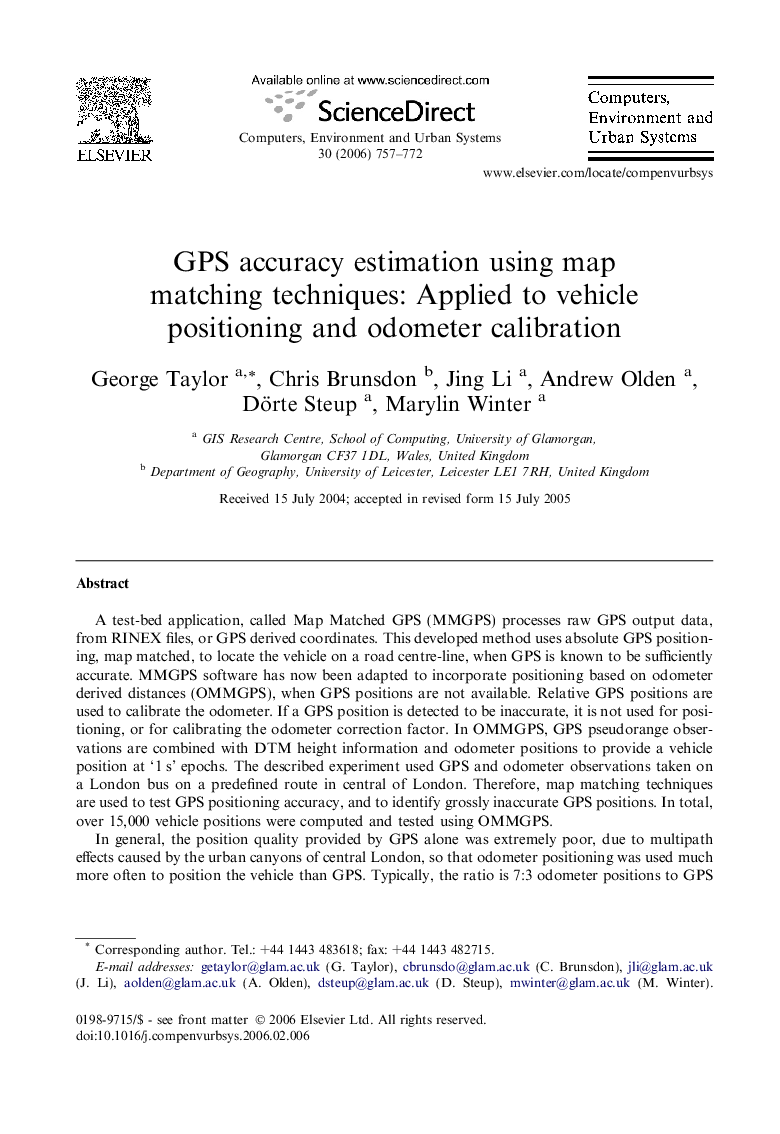| Article ID | Journal | Published Year | Pages | File Type |
|---|---|---|---|---|
| 506669 | Computers, Environment and Urban Systems | 2006 | 16 Pages |
A test-bed application, called Map Matched GPS (MMGPS) processes raw GPS output data, from RINEX files, or GPS derived coordinates. This developed method uses absolute GPS positioning, map matched, to locate the vehicle on a road centre-line, when GPS is known to be sufficiently accurate. MMGPS software has now been adapted to incorporate positioning based on odometer derived distances (OMMGPS), when GPS positions are not available. Relative GPS positions are used to calibrate the odometer. If a GPS position is detected to be inaccurate, it is not used for positioning, or for calibrating the odometer correction factor. In OMMGPS, GPS pseudorange observations are combined with DTM height information and odometer positions to provide a vehicle position at ‘1 s’ epochs. The described experiment used GPS and odometer observations taken on a London bus on a predefined route in central of London. Therefore, map matching techniques are used to test GPS positioning accuracy, and to identify grossly inaccurate GPS positions. In total, over 15,000 vehicle positions were computed and tested using OMMGPS.In general, the position quality provided by GPS alone was extremely poor, due to multipath effects caused by the urban canyons of central London, so that odometer positioning was used much more often to position the vehicle than GPS. Typically, the ratio is 7:3 odometer positions to GPS positions. In the case of one particular trip, OMMGPS provides a mean error of position of 8.8 m compared with 53.7 m for raw GPS alone.
